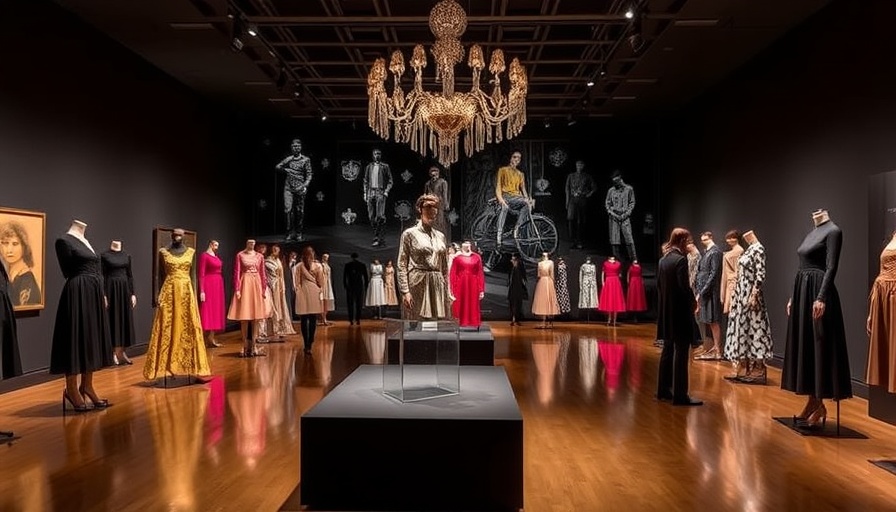
Unveiling Fashion's Masterpieces: Why Museums Matter
The world of fashion extends far beyond the clothes we wear; it encompasses artistry, history, and cultural significance. Fashion museums serve as vital spaces where these elements converge, showcasing not only garments but the stories of the people behind them. As collections grow and diversify, these institutions play a pivotal role in enhancing our understanding of fashion as an art form. They allow visitors to appreciate the intricate craftsmanship that has been a means of human expression throughout history.
A Tour of the Globe’s Premier Fashion Museums
Across continents, fashion museums offer remarkable collections that resonate with local culture while influencing global trends. Here, we spotlight several of the world's top fashion museums, capturing the essence of style in its varied contexts.
The Musée des Arts Décoratifs, Paris
Paris, often heralded as the fashion capital, hosts the Musée des Arts Décoratifs. This museum features extensive collections from historical costumes to contemporary fashion showcases. Frequent exhibitions spotlight designers like Christian Dior and Yves Saint Laurent, making it a must-visit.
FIT Museum, New York City
Home to a rich repository of fashion history, the Fashion Institute of Technology (FIT) Museum presents an engaging narrative of textiles, fashion illustrations, and historical garments. With its commitment to education, the museum also conducts workshops and presentations, bridging the gap between academia and the public.
Victoria and Albert Museum, London
The Victoria and Albert Museum stands out not only for its extensive collection but also for its interactive exhibitions. Its fashion gallery focuses on changing styles, featuring pieces from different eras that connect visitors to the evolving world of fashion.
Beyond the Exhibits: Cultural Connections and Storytelling
Fashion museums are not just about displaying artifacts; they are dynamic spaces for dialogue about societal change, sustainability, and identity. They encourage collaboration with local designers, engaging in curatorial projects that highlight current trends and future directions in fashion.
Engaging the Community
Many fashion museums prioritize community involvement, facilitating workshops and cultural events that showcase local talent. Through these initiatives, museums transform into cultural hubs that elevate the fashion discourse, inviting participants to explore their identities through clothing.
Future Trends: The Digital Evolution of Fashion Museums
With the rise of technology, fashion museums are also embracing digital innovations. Virtual reality (VR) and augmented reality (AR) are increasingly being utilized to enhance visitors' experiences. Museums can now provide online tours that reveal behind-the-scenes processes and offer immersive storytelling experiences.
The Importance of Fashion Preservation
The preservation of fashion artifacts is crucial for understanding our past and the narratives woven into the fabric of society. Fashion museums serve as custodians of this history, ensuring future generations can study and appreciate the evolution of style and societal norms.
Making the Most of Your Visits
Travelers and fashion enthusiasts alike can enrich their journeys by including visits to these cultural landmarks. Pack your itinerary with museum tours and engage in guided experiences to fully absorb the historical contexts of the garments on display.
Join the World of Fashion Travel
As fashion museums continue to evolve, they invite the public to explore beyond mere garments. They present unique opportunities for travel that meld luxury experiences with cultural education. For those seeking adventurous travel itineraries, fashion museums offer an enticing gateway—a blend of global luxury getaways with cultural exploration.
Contact Us to Plan Your Fashion Travel Adventure
For more insight into exclusive cultural journeys and tailored travel experiences, reach out to us today at www.sitinmyseats.com for more information or to book your free travel consultation!
 Add Row
Add Row  Add
Add 




Write A Comment